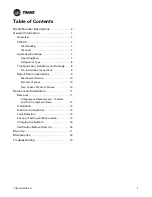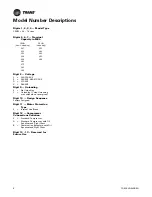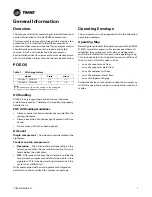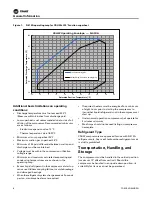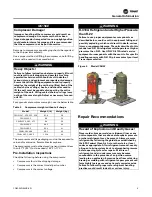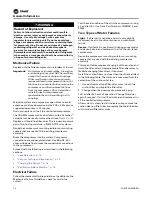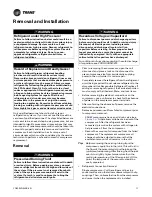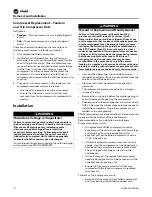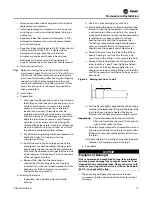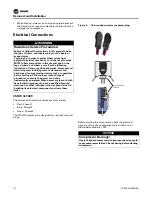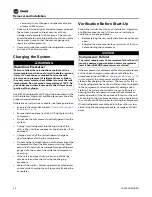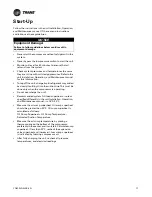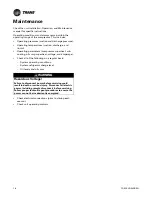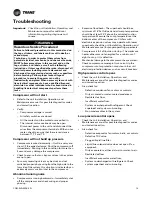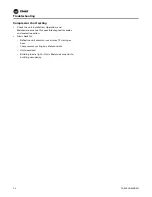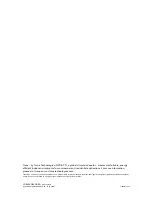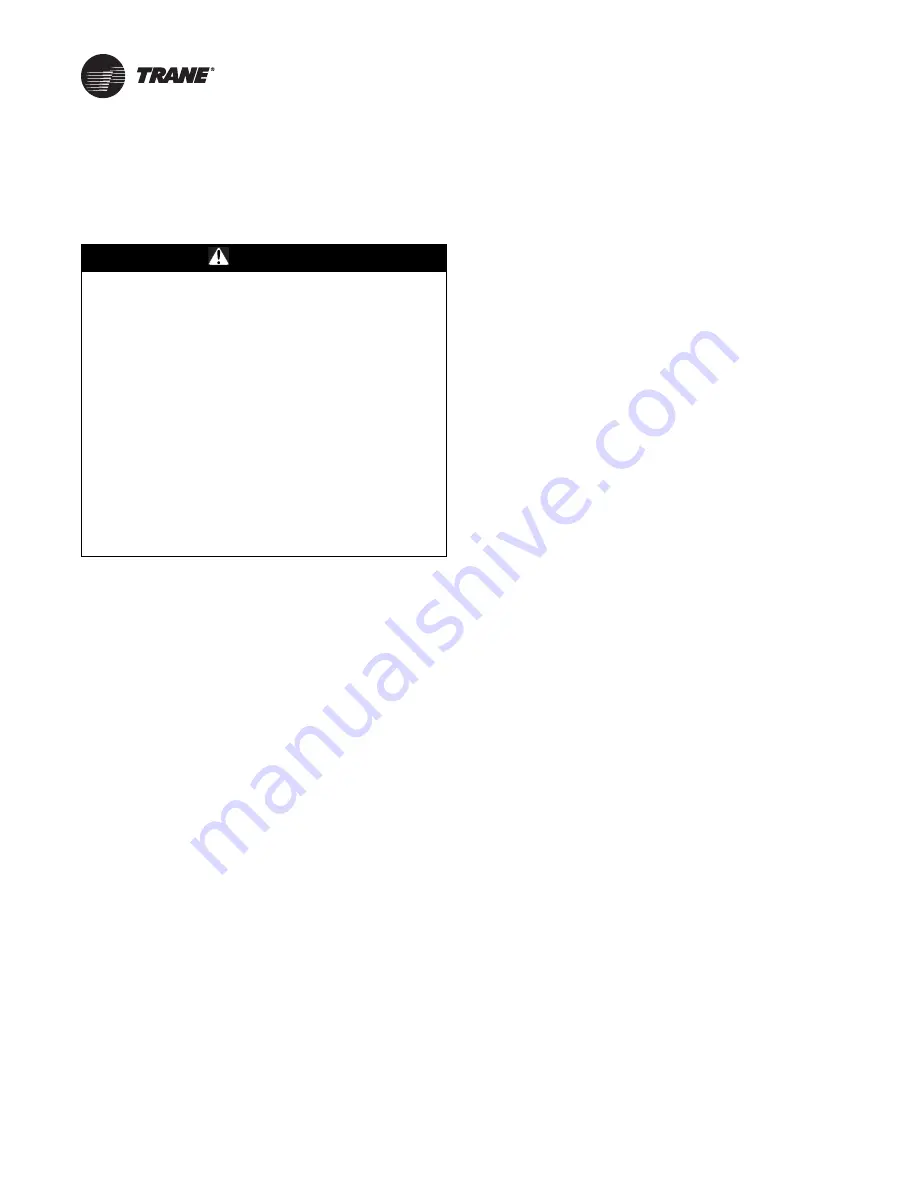
COM-SVN003B-EN
19
Troubleshooting
Important:
Check the unit Installation, Operation, and
Maintenance manual for additional
information regarding diagnosis and
causes.
Compressor will not start
•
Refer to the unit Installation, Operation, and
Maintenance manual for possible diagnostics codes
and corrective action.
•
Verify:
–
Compressor voltage is correct.
–
All safety switches are closed.
–
All the contacts on the contactor are pulled in.
–
The internal motor overloads may be open.
Disconnect power to the unit and disconnect the
wires from the compressor terminals. With an ohm
meter, check to ensure that there is resistance
between T1-T2 and T3.
Compressor will not build up pressure
•
Compressor is wired incorrectly—It will be noisy and
draw 1/2 the expected amps. Shut the compressor off
immediately. Running in this condition for more than
5 seconds may damage the compressor.
•
Check to ensure that any bypass valves in the system
are not open.
•
Four-way reversing valve may be stuck and not
switched properly bypassing from the high side to the
low side of the system; this situation is indicated by an
extremely warm suction inlet to the compressor.
Abnormal running noise
•
Compressor is running backwards—Immediately shut
off the compressor and check wiring and proper
phasing.
•
Excessive floodback—The superheat should be a
minimum of 16°F at full load and oil sump temperature
should be at least 20°F above the saturated suction
temperature. Measure the sump temperature at the
bottom center of the compressor. Chillers with
electronic expansion valves may operate with lower
superheats; check the unit Installation, Operation, and
Maintenance manual for proper operating superheats.
•
Compressor is full of liquid on startup—The crankcase
heater either was not energized for a minimum of
eight hours, or it is defective.
•
Mechanical damage to the compressor has occurred—
Check compressor amperage. It may also trip the
compressor motor protection module or other unit
electrical protection devices such as circuit breakers.
High-pressure control opens
•
Check the unit Installation, Operation, and
Maintenance manual for possible diagnostics codes
and corrective action.
•
Also check for:
–
Defective condenser fan motors or controls.
–
Dirty air-cooled or water-cooled condensers.
–
Restricted air flow.
–
Insufficient water flow.
–
System overcharged with refrigerant. Check
superheat and system sub-cooling.
–
Non-condensables in the system.
Low-pressure control opens
•
Check the unit Installation, Operation, and
Maintenance manual for possible diagnostics codes
and corrective action.
•
Also check for:
–
Defective evaporator fan motors, belts, or controls.
–
Defective TXV valve.
–
Plugged liquid line filter.
–
Liquid line solenoid valve does not open (if so
equipped).
–
Dirty evaporators, either air-to-air or water-to-air.
–
Restricted airflow.
–
Insufficient evaporator water flow.
–
System undercharged with refrigerant. Check
system superheat and sub-cooling.
WARNING
Hazardous Service Procedures!
Failure to follow all precautions in this manual and on
the tags, stickers, and labels could result in death or
serious injury.
Technicians, in order to protect themselves from
potential electrical, mechanical, and chemical hazards,
MUST follow precautions in this manual and on the
tags, stickers, and labels, as well as the following
instructions: Unless specified otherwise, disconnect all
electrical power including remote disconnect and
discharge all energy storing devices such as capacitors
before servicing. Follow proper lockout/tagout
procedures to ensure the power can not be
inadvertently energized. When necessary to work with
live electrical components, have a qualified licensed
electrician or other individual who has been trained in
handling live electrical components perform these
tasks.

